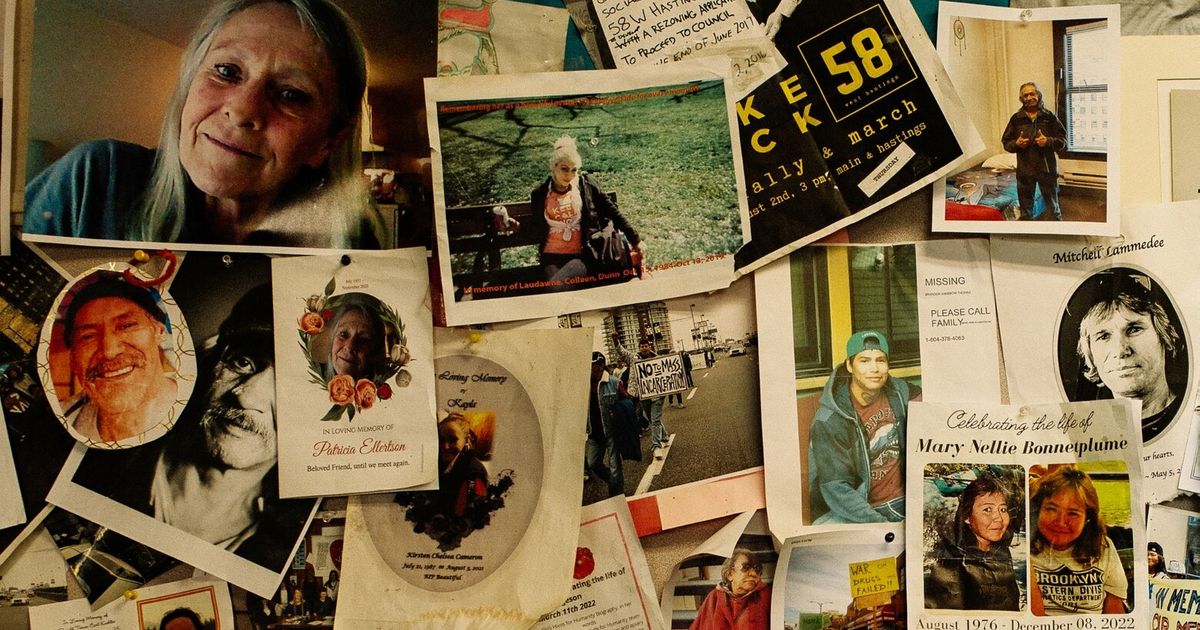VANCOUVER, British Columbia — The mood was cautiously optimistic and the message was simple: Drug decriminalization saves lives. People who used or carried small quantities of illegal drugs in plain sight would no longer face arrest in British Columbia, the nexus of Canada’s opioid crisis, officials announced two years ago. So bold was the experiment, even in a province known for pioneering addiction policies, that its public health officer said she was in disbelief the day had actually come.
But decriminalization, a policy introduced as a way of alleviating the opioid crisis, has instead been blamed for deepening it. Scenes of people openly using drugs on city streets have led several elected leaders, other critics and even some supporters to say that decriminalization is contributing to a sense of public disorder. “Our goal was to save lives,” British Columbia’s premier, David Eby, said at a recent news conference.

“But that compassion, that concern for people who are struggling, does not mean that anything goes. We still have expectations around safety.” In May, the federal government, which regulates controlled substances, approved a provincial request to reverse the policy and again make public drug use and possession in British Columbia a crime.
The shift came not long after a similar experiment in Oregon ended in April, following a vote by the state Legislature to recriminalize drugs amid soaring overdose deaths. More The battle in British Columbia reflects a broader debate over how to tackle the opioid crisis in the face of a loss of support for some progressive practices to address it. Those practices, collectively known as harm reduction, are driven by a strategy meant to keep drug users alive rather than getting them to quit.
Services that fall under this category include needle exchanges; safe injection sites; the distribution of naloxone, a drug used to reverse overdoses; and the testing of street drugs to reveal the presence of any other harmful substances. Research has shown that harm reduction is effective in preventing deaths, disease transmission and hospital emergency department visits. Places offering support to drug users line the streets of Vancouver’s Downtown Eastside, the neighborhood hardest hit by Canada’s opioid crisis.
Brett Thompson said it took him 17 years to escape the clutches of heroin, which he did because of services he got in the Downtown Eastside. He was a regular at a supervised drug-injection site where, one year, the staff logged his attendance about 1,000 times because of repeat visits on the same day to ward off withdrawals. “If I’ve been there 1,000 times, think of how many other times I’ve shot up when I didn’t go there,” Thompson, 54, said.
“I’m happy to be alive.” Thompson now makes weekly visits to a different health center in the heart of the Downtown Eastside to pick up his prescription methadone, a common treatment for opioid use disorder. Safe injection sites, along with decriminalization, are among the harm reduction measures that have come under attack from critics who claim they lead to crime and perpetuate a cycle of drug abuse.
In British Columbia, critics say the province should not have pursued decriminalization without also bolstering other services that drug users need, like housing and addiction treatment. “Decriminalization was allowed to proceed without the required guardrails,” said Jess Ketchum, a founder of Save Our Streets, a coalition of citizen groups and businesses in British Columbia focused on addressing street crime. Many residents, he added, complained of increased drug use on public transit, near schools and in entrances to businesses.
Provincial officials say they have seen no evidence that decriminalization had led to more public drug use, but that it had, in fact, helped reduce criminal interactions with the police. Drug possession charges filed by the Vancouver police fell by a total of 76% during the first nine months of decriminalization in 2023 compared with the yearly average for the previous four years. As an alternative to harm reduction, some conservative politicians are promoting abstinence-based treatment and addiction rehab, which includes supervised detox and counseling services, as solutions to drug abuse.
In Alberta, which neighbors British Columbia, officials have invested funds to increase the number of rehab programs and residential treatment beds, and created organizations to administer mental health and addiction services to address the province’s record high number of overdose deaths. Abstinence is the only effective alternative to drug overdose deaths, provincial officials say. “Someone who says there’s another way out of an addiction is leading you down a garden path,” Dan Williams, the minister overseeing Alberta’s drug policy, told reporters at a news conference.
Some front-line workers say harm reduction practices are being targeted to score political points at a time when death tolls are reaching new highs and different approaches are necessary to keep users alive. British Columbia saw a record 2,551 drug overdose deaths last year, up from 2,385 in 2022, and has the fifth-highest overdose mortality rate of any North American state or province, at 45.7 deaths per 100,000 residents.
Provincial officials declared overdose deaths a public health emergency in 2016. Since then, about 14,600 people have died. “That’s a long time to be in crisis,” said Ronnie Grigg, an outreach worker and president of the Zero Block Society, a harm reduction group.
“Everything about this, every response, has been too little too late.” A coalition representing 20 civil society groups in British Columbia has asked the Federal Court of Canada to overturn the government’s recriminalization decision, arguing that it was reached “in bad faith, for reasons of political expedience.” The Downtown Eastside in Vancouver has become a focal point for both sides of the debate over how to address drug abuse.
Its sidewalks are filled with people in the throes of addiction, provoking a backlash from some politicians and community groups claiming that the neighborhood has become too unsafe. But it is also home to the kinds of programs, including supervised injection sites and methadone clinics, that those working to address drug addiction say are essential. Days after Eby announced the plan to roll back decriminalization, about three dozen people gathered at the Downtown Eastside office of the Vancouver Area Network of Drug Users, a nonprofit, to discuss what the change would mean.
“I used to believe in tough love, too, until I realized that it cost lives in the alleyways,” Elli Taylor, a community organizer at the nonprofit, said in an interview. Taylor has been homeless on and off for 20 years and uses street drugs, though the advent of fentanyl — a potent, and often deadly, synthetic opioid — has made drug consumption more dangerous since dealers often mix in fentanyl. “It’s poison,” said Taylor.
“It’s a crapshoot. It’s Russian roulette.” Underscoring some of the bolder harm reduction efforts in British Columbia, one group had been supplying cocaine, methamphetamines and heroin to drug users since August 2022, arguing that it protected them from buying tainted and potentially lethal narcotics from dealers.
The group was denied approval from the federal government to legalize its work. The project ended last October when the police raided the group’s offices, arrested its two founders and charged them with drug possession. British Columbia’s focus on renewed enforcement has cast a shadow on harm reduction efforts that have proved effective over the long term, some experts say.
“There are no magic bullets,” said Jaime Arredondo, a professor and scientist who researches substance use at the University of Victoria. “These evidence-based policies work,” he added. “But we need to give them time.
” Thompson said he owed his survival to workers at the safe injection site where he was a frequent visitor. “I wouldn’t be alive without those people,” he said during a walk along the Downtown Eastside streets where he once lived. Weaving through drug users selling odd items, he said: “I’m no longer part of the chaos.
It seems like a miracle.”.


















